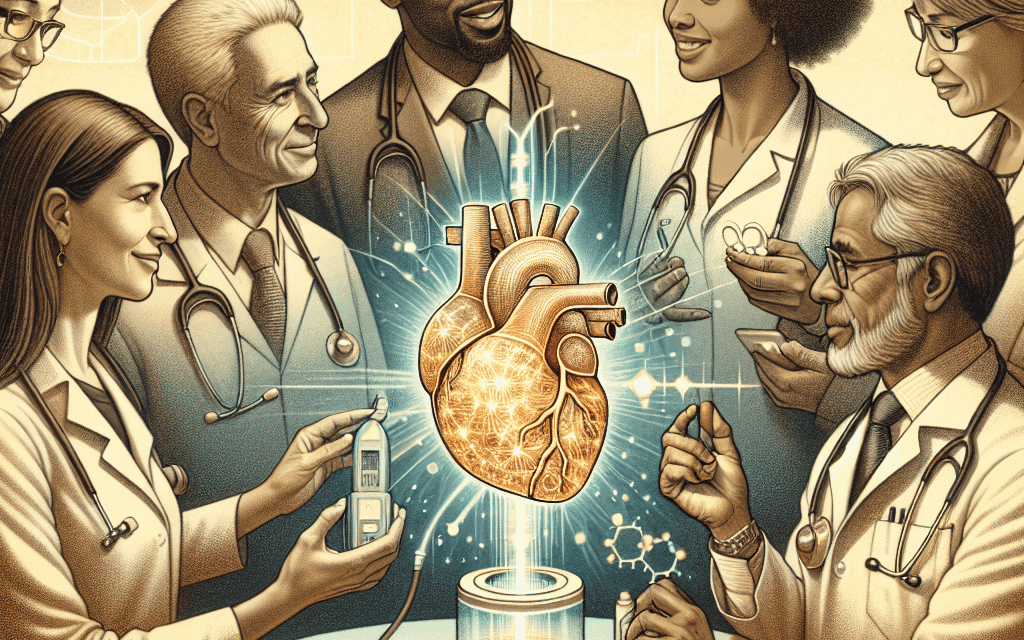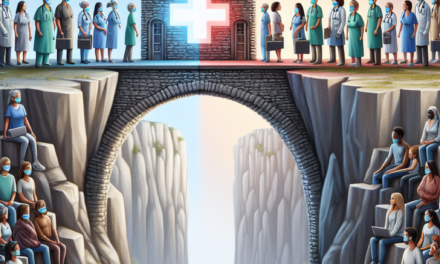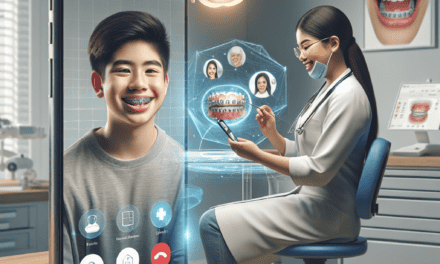Empowering Change in Medical Technology: The Impact of an Ed.D. in Health and Human Services
The field of medical technology is rapidly evolving, driven by advancements in research, innovation, and the increasing demand for efficient healthcare solutions. As healthcare systems worldwide face unprecedented challenges, the need for skilled leaders who can navigate these changes has never been more critical. An Ed.D. in Health and Human Services equips professionals with the knowledge and skills necessary to lead in this dynamic environment. This article explores the impact of an Ed.D. in Health and Human Services on empowering change in medical technology, focusing on five key areas: leadership development, curriculum innovation, research and evidence-based practice, interdisciplinary collaboration, and the integration of technology in education.
1. Leadership Development in Health and Human Services
Leadership is a cornerstone of effective change management in any sector, and healthcare is no exception. An Ed.D. in Health and Human Services emphasizes the development of leadership skills tailored to the unique challenges of the healthcare landscape.
Effective leaders in health and human services must possess a deep understanding of both the technical aspects of medical technology and the human elements of healthcare delivery. This dual focus is essential for fostering an environment where innovation can thrive. Graduates of Ed.D. programs are trained to:
- Understand the complexities of healthcare systems.
- Develop strategic plans that align with organizational goals.
- Implement change initiatives that improve patient outcomes.
- Foster a culture of collaboration and continuous improvement.
For instance, a case study involving a hospital system that implemented a new electronic health record (EHR) system illustrates the importance of leadership in managing technological change. The leadership team, composed of Ed.D. graduates, conducted thorough training sessions for staff, ensuring that everyone was comfortable with the new system. As a result, the hospital saw a 30% increase in efficiency within six months of implementation, demonstrating how effective leadership can drive successful technological adoption.
Moreover, leadership development programs within Ed.D. curricula often include mentorship opportunities, allowing students to learn from experienced professionals in the field. This mentorship can provide invaluable insights into the practical challenges of implementing medical technology solutions and navigating the complexities of healthcare policy.
2. Curriculum Innovation in Health and Human Services Education
The rapid pace of change in medical technology necessitates a curriculum that is both current and adaptable. An Ed.D. in Health and Human Services encourages curriculum innovation that reflects the latest advancements in medical technology and healthcare practices.
Curriculum innovation involves integrating new technologies and methodologies into educational programs. This can include:
- Incorporating simulation-based learning to provide hands-on experience with medical technologies.
- Utilizing online platforms for distance learning, making education more accessible.
- Developing interdisciplinary courses that combine health sciences with technology and data analytics.
For example, a university offering an Ed.D. program in Health and Human Services may introduce a course on telehealth technologies. This course would cover the principles of telemedicine, legal and ethical considerations, and practical applications in various healthcare settings. By equipping future leaders with knowledge about emerging technologies, educational institutions can ensure that graduates are prepared to implement these innovations in their organizations.
Additionally, curriculum innovation can enhance student engagement and learning outcomes. By employing active learning strategies, such as group projects and case studies, educators can foster critical thinking and problem-solving skills among students. This approach not only prepares graduates for real-world challenges but also encourages them to become lifelong learners who can adapt to future changes in the healthcare landscape.
3. Research and Evidence-Based Practice
Research is a fundamental component of advancing medical technology and improving healthcare delivery. An Ed.D. in Health and Human Services emphasizes the importance of evidence-based practice, equipping graduates with the skills to conduct research and apply findings to real-world situations.
Evidence-based practice involves integrating clinical expertise with the best available research evidence and patient values. Graduates of Ed.D. programs are trained to:
- Conduct rigorous research that addresses pressing healthcare issues.
- Analyze data to inform decision-making processes.
- Translate research findings into practical applications within healthcare settings.
A notable example of the impact of research in medical technology is the development of wearable health devices. Research conducted by Ed.D. graduates has shown that these devices can significantly improve patient engagement and adherence to treatment plans. By analyzing data collected from these devices, healthcare providers can tailor interventions to meet individual patient needs, ultimately leading to better health outcomes.
Furthermore, Ed.D. programs often emphasize the importance of disseminating research findings through publications and presentations. This not only contributes to the body of knowledge in health and human services but also empowers graduates to advocate for evidence-based practices within their organizations. By fostering a culture of research and inquiry, Ed.D. graduates can drive innovation and improve the quality of care delivered to patients.
4. Interdisciplinary Collaboration in Healthcare
The complexity of modern healthcare requires collaboration across various disciplines. An Ed.D. in Health and Human Services prepares graduates to work effectively in interdisciplinary teams, fostering a collaborative approach to problem-solving and innovation.
Interdisciplinary collaboration involves bringing together professionals from diverse fields, such as medicine, nursing, social work, and technology, to address complex healthcare challenges. Graduates of Ed.D. programs are equipped to:
- Facilitate communication among team members from different disciplines.
- Identify common goals and develop shared strategies for achieving them.
- Leverage the strengths of each discipline to enhance patient care.
A case study highlighting the benefits of interdisciplinary collaboration can be seen in a community health initiative aimed at reducing diabetes rates. The initiative brought together healthcare providers, nutritionists, and technology experts to develop a comprehensive program that included education, dietary support, and the use of mobile health applications. As a result, participants in the program experienced a 25% reduction in diabetes-related complications over one year.
Moreover, Ed.D. programs often emphasize the importance of cultural competence in interdisciplinary collaboration. Graduates learn to navigate the diverse cultural backgrounds of patients and team members, ensuring that care is respectful and responsive to individual needs. This cultural awareness is essential for fostering trust and collaboration among team members, ultimately leading to improved patient outcomes.
5. Integration of Technology in Education
The integration of technology in education is a critical aspect of preparing future leaders in health and human services. An Ed.D. in Health and Human Services emphasizes the use of technology to enhance learning experiences and improve educational outcomes.
Technology can be integrated into education in various ways, including:
- Utilizing online learning platforms to provide flexible access to course materials.
- Incorporating virtual simulations to allow students to practice skills in a safe environment.
- Employing data analytics to track student progress and tailor instruction to individual needs.
For instance, a university may implement a virtual reality (VR) program that allows students to experience real-life healthcare scenarios. This immersive learning experience can enhance students’ understanding of medical technologies and improve their clinical skills. Research has shown that students who engage in VR simulations demonstrate higher levels of retention and application of knowledge compared to traditional learning methods.
Additionally, the integration of technology in education can facilitate collaboration among students and faculty. Online discussion forums, collaborative projects, and digital portfolios enable students to engage with their peers and instructors, fostering a sense of community and enhancing the learning experience.
Conclusion
The impact of an Ed.D. in Health and Human Services on empowering change in medical technology is profound. Through leadership development, curriculum innovation, research and evidence-based practice, interdisciplinary collaboration, and the integration of technology in education, graduates are well-equipped to navigate the complexities of the healthcare landscape.
As the demand for skilled leaders in health and human services continues to grow, the importance of advanced education cannot be overstated. An Ed.D. program not only prepares individuals to lead in the implementation of medical technologies but also empowers them to drive meaningful change that improves patient care and outcomes.
In summary, the intersection of education and medical technology presents a unique opportunity for professionals to make a significant impact in the healthcare sector. By investing in an Ed.D. in Health and Human Services, individuals can position themselves as leaders who are capable of shaping the future of healthcare through innovation, collaboration, and a commitment to evidence-based practice.





